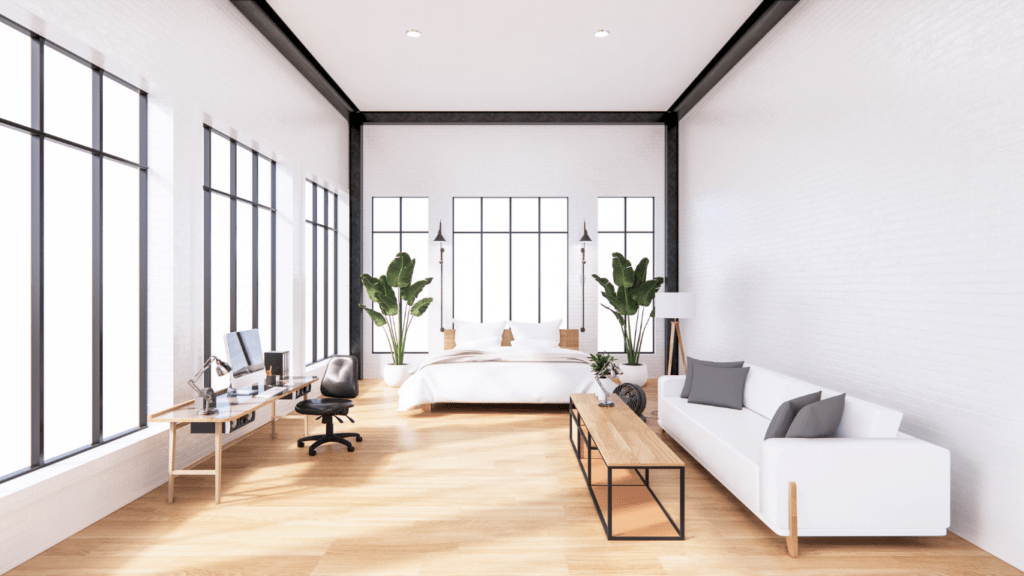Thinking about transforming your living space into an open-concept haven? I’ve got you covered. Embracing open-concept living can breathe new life into your home, creating a seamless flow and enhancing natural light. In this article, I’ll walk you through the art of achieving this sought-after design trend through strategic structural upgrades.
From knocking down walls to reimagining room layouts, I’ll share expert insights on how to make your space feel more expansive and welcoming. Discover how a few key changes can revolutionize the way you experience your home, making it the perfect spot for entertaining or simply relaxing in style. Let’s dive into the world of open-concept living and unlock the potential of your space with smart structural enhancements.
Benefits of Open-Concept Living
Embracing an open-concept living space offers a myriad of advantages that can transform your home environment significantly. Here are some key benefits of opting for an open floor plan:
- Enhanced Natural Light: By breaking down barriers between rooms, natural light can flow more freely throughout the space. This creates a brighter and more cheerful atmosphere, reducing the need for artificial lighting and boosting energy efficiency.
- Spacious Feel: Removing walls and partitions can make your home appear larger and more expansive. The seamless connection between different areas fosters a sense of continuity and airiness, enhancing the overall visual appeal and comfort of the living space.
- Improved Social Interaction: Open layouts facilitate better communication and social interaction among family members and guests. Whether you’re hosting a dinner party or simply spending time with your loved ones, the lack of barriers promotes connectivity and a sense of togetherness.
- Flexible Design Options: With an open-concept design, you have the freedom to customize and rearrange your living space according to your preferences. This versatility allows you to adapt the layout to different uses, from hosting gatherings to creating cozy nooks for relaxation.
- Modern Aesthetic: Open floor plans are synonymous with contemporary and sleek design styles. Embracing this trend can give your home a modern and sophisticated look that appeals to a wide range of tastes, making it a timeless choice for both current and future homeowners.
By harnessing these benefits of open-concept living through strategic structural upgrades, you can revitalize your space and create a more inviting and functional environment for everyday living. It’s an investment that not only enhances your quality of life but also adds value to your home in the long run.
Structural Changes for Achieving Open-Concept Living
When aiming to achieve open-concept living in your home, several strategic structural changes can make a significant impact on the overall design and functionality of the space.
Removing Walls and Partitions
Removing walls and partitions is a key structural upgrade to create a seamless flow between different areas of your home. By taking down barriers, you not only enhance natural light distribution but also make the space feel larger and more connected. This adjustment promotes a sense of openness and allows for better social interaction and visibility throughout the living areas.
Installing Columns or Beams
In some cases, installing columns or beams can provide the necessary structural support when removing walls to achieve an open-concept layout. These elements can not only ensure the structural integrity of the space but also add a touch of architectural interest. Columns or beams help define separate zones within the open area while maintaining an uninterrupted visual flow, contributing to a modern and spacious feel.
Maximizing Natural Light in Open-Concept Spaces
To achieve optimal natural light in open-concept spaces, I focus on strategic design elements that enhance brightness and create a welcoming atmosphere. By incorporating these features, I ensure that light flows seamlessly throughout the space, accentuating its open and airy feel.
- Large Windows and Glass Doors: Incorporating these elements into the design allows me to maximize the entry of natural light. The expansive glass surfaces help illuminate the entire space, making it feel more spacious and inviting.
- Light Colors and Reflective Surfaces: I opt for light-colored walls, ceilings, and floors to amplify the natural light present in the space. Additionally, I strategically place mirrors and shiny surfaces to reflect light and create a brighter ambiance.
- Skylights and Light Tubes: By installing skylights and light tubes, I enhance the natural light penetration in the open-concept area. These features bring in sunlight from above, adding a warm and natural glow to the space.
- Smart Lighting Solutions: I complement natural light with artificial lighting that mimics daylight. Using adjustable fixtures and dimmers, I can control the intensity of light and create different moods throughout the day.
- Minimalist Window Treatments: Opting for sheer or light-filtering window treatments allows me to preserve the openness of the space while still having the option to control the amount of light coming in.
By integrating these strategies, I ensure that my open-concept living space is bathed in natural light, creating a bright and inviting environment for relaxation and socializing.
Practical Considerations for Structural Upgrades
When considering structural upgrades for open-concept living, it’s essential to assess the feasibility and impact of the changes. Here are key practical considerations to keep in mind:
- Evaluate Structural Integrity: Before embarking on any structural upgrades, I always recommend consulting a professional to assess the existing structure’s integrity. This step ensures that removing walls or making significant changes won’t compromise the safety and stability of your home.
- Obtain Necessary Permits: When altering the structural layout of your living space, it’s crucial to obtain the required permits from the local authorities. Ensuring compliance with building codes and regulations is essential to avoid legal issues and guarantee that the modifications meet safety standards.
- Plan for Wiring and Plumbing: If your structural upgrades involve relocating walls or reconfiguring the layout, consider the impact on electrical wiring and plumbing systems. It’s vital to plan these aspects in advance to avoid costly and time-consuming modifications in the future.
- Budget for Unexpected Costs: Structural upgrades can sometimes uncover unforeseen issues that require additional work and expenses. To prevent financial surprises, allocate a contingency budget for unexpected costs that may arise during the renovation process.
- Work with Experienced Professionals: Collaborating with experienced architects, structural engineers, and contractors is key to the success of your structural upgrades. Their expertise and knowledge can help you navigate the complexities of the renovation project and ensure that the modifications are implemented correctly.
By considering these practical aspects of structural upgrades for open-concept living, you can plan and execute the transformation of your space effectively and efficiently.



 Deborahn McKenneyster, the founder of Residence Resale Tactics, is a dynamic leader with a deep-rooted passion for the real estate market. With years of experience in the industry, Deborahn has cultivated a reputation for her strategic acumen and innovative approach to property resale. Her journey began as a real estate agent, where she quickly recognized the need for a platform that provides actionable insights and practical strategies for agents, investors, and homeowners alike. Deborahn’s vision was to create a resource that not only offers the latest market news but also equips users with the tools to navigate complex transactions and achieve success in a competitive field.
Under her leadership, Residence Resale Tactics has become a trusted source of information for real estate professionals, delivering expert guidance on everything from market trends and investment strategies to creative marketing techniques. Deborahn's commitment to empowering others is evident in her dedication to curating content that is both timely and relevant, helping clients enhance their knowledge and make informed decisions. Her innovative mindset and passion for real estate continue to drive the platform forward.
Deborahn McKenneyster, the founder of Residence Resale Tactics, is a dynamic leader with a deep-rooted passion for the real estate market. With years of experience in the industry, Deborahn has cultivated a reputation for her strategic acumen and innovative approach to property resale. Her journey began as a real estate agent, where she quickly recognized the need for a platform that provides actionable insights and practical strategies for agents, investors, and homeowners alike. Deborahn’s vision was to create a resource that not only offers the latest market news but also equips users with the tools to navigate complex transactions and achieve success in a competitive field.
Under her leadership, Residence Resale Tactics has become a trusted source of information for real estate professionals, delivering expert guidance on everything from market trends and investment strategies to creative marketing techniques. Deborahn's commitment to empowering others is evident in her dedication to curating content that is both timely and relevant, helping clients enhance their knowledge and make informed decisions. Her innovative mindset and passion for real estate continue to drive the platform forward.